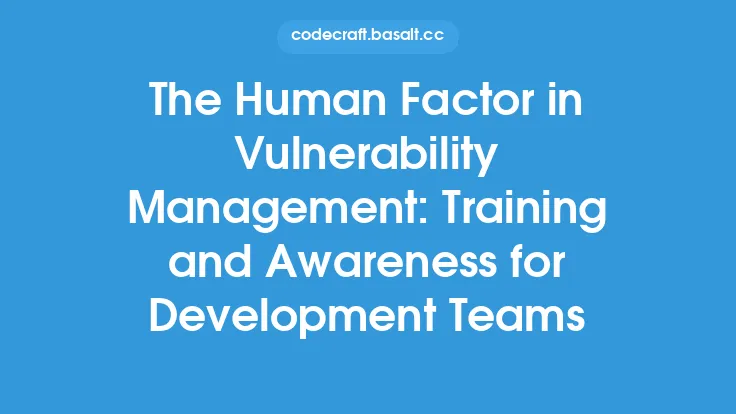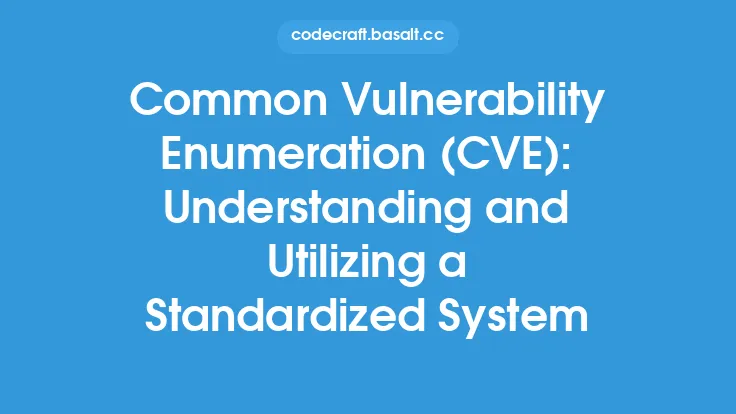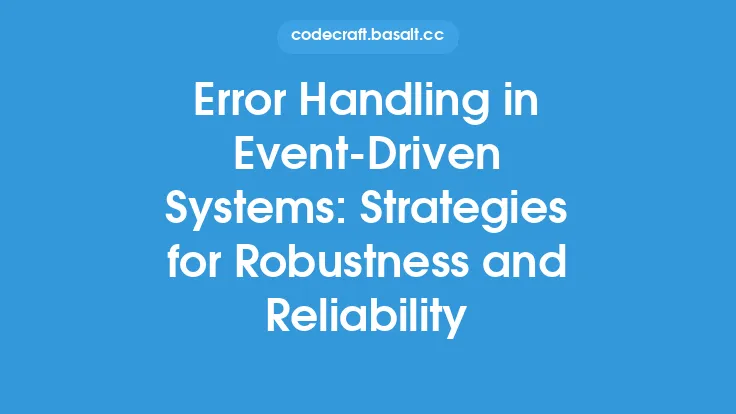Vulnerability scanning and remediation are critical components of a comprehensive vulnerability management program. The primary goal of vulnerability scanning is to identify potential vulnerabilities in an organization's systems, networks, and applications, while remediation involves taking corrective action to mitigate or eliminate these vulnerabilities. Effective strategies for reduction involve a combination of people, processes, and technology.
Introduction to Vulnerability Scanning
Vulnerability scanning involves using automated tools to identify potential vulnerabilities in an organization's systems, networks, and applications. These tools work by sending probes to target systems, analyzing the responses, and comparing them to known vulnerability signatures. The scanning process can be performed internally or externally, depending on the organization's needs and the type of vulnerabilities being targeted. Internal scans focus on identifying vulnerabilities within the organization's network, while external scans focus on identifying vulnerabilities that can be exploited by external attackers.
Types of Vulnerability Scans
There are several types of vulnerability scans, each with its own strengths and weaknesses. Network scans involve scanning IP addresses and ports to identify open services and potential vulnerabilities. System scans involve scanning individual systems to identify vulnerabilities in operating systems, applications, and configurations. Application scans involve scanning web applications and other software to identify vulnerabilities in code and configuration. Database scans involve scanning databases to identify vulnerabilities in database management systems and configurations.
Vulnerability Remediation Strategies
Vulnerability remediation involves taking corrective action to mitigate or eliminate identified vulnerabilities. The remediation process typically involves prioritizing vulnerabilities based on risk, assigning remediation tasks to responsible teams, and tracking progress. Effective remediation strategies involve a combination of patch management, configuration management, and vulnerability mitigation. Patch management involves applying patches and updates to vulnerable systems and applications. Configuration management involves configuring systems and applications to minimize vulnerabilities. Vulnerability mitigation involves implementing workarounds or temporary fixes to mitigate the risk of exploitation.
Patch Management Best Practices
Patch management is a critical component of vulnerability remediation. Effective patch management involves identifying, acquiring, testing, and applying patches to vulnerable systems and applications. Best practices for patch management include implementing a patch management policy, prioritizing patches based on risk, testing patches before deployment, and automating patch deployment. Organizations should also consider implementing a patch management tool to streamline the patch management process and reduce the risk of human error.
Configuration Management Best Practices
Configuration management is also critical to vulnerability remediation. Effective configuration management involves configuring systems and applications to minimize vulnerabilities. Best practices for configuration management include implementing a configuration management policy, using secure configuration templates, monitoring configuration changes, and automating configuration management. Organizations should also consider implementing a configuration management tool to streamline the configuration management process and reduce the risk of human error.
Vulnerability Mitigation Strategies
Vulnerability mitigation involves implementing workarounds or temporary fixes to mitigate the risk of exploitation. Effective mitigation strategies involve identifying potential mitigation options, assessing the effectiveness of each option, and implementing the most effective option. Common mitigation strategies include implementing firewall rules, configuring intrusion detection and prevention systems, and implementing virtual patching. Organizations should also consider implementing a web application firewall (WAF) to protect web applications from exploitation.
Continuous Monitoring and Vulnerability Scanning
Continuous monitoring and vulnerability scanning are critical to identifying and remediating vulnerabilities in real-time. Effective continuous monitoring involves implementing a continuous monitoring tool to scan for vulnerabilities on a regular basis. Best practices for continuous monitoring include scanning for vulnerabilities daily, using automated tools to identify and prioritize vulnerabilities, and implementing a remediation workflow to track and remediate identified vulnerabilities.
Integrating Vulnerability Scanning with Other Security Tools
Integrating vulnerability scanning with other security tools is critical to maximizing the effectiveness of vulnerability management. Effective integration involves integrating vulnerability scanning with incident response, security information and event management (SIEM) systems, and configuration management tools. Organizations should also consider integrating vulnerability scanning with other security tools, such as penetration testing and red teaming, to maximize the effectiveness of vulnerability management.
Measuring the Effectiveness of Vulnerability Scanning and Remediation
Measuring the effectiveness of vulnerability scanning and remediation is critical to identifying areas for improvement and maximizing the return on investment (ROI) of vulnerability management. Effective measurement involves tracking key performance indicators (KPIs), such as the number of identified vulnerabilities, the time to remediate vulnerabilities, and the overall risk reduction. Organizations should also consider implementing a vulnerability management dashboard to track and visualize vulnerability management metrics.
Common Challenges and Limitations
Common challenges and limitations of vulnerability scanning and remediation include the complexity of modern systems and applications, the sheer volume of identified vulnerabilities, and the limited resources available for remediation. Effective strategies for overcoming these challenges involve prioritizing vulnerabilities based on risk, automating vulnerability scanning and remediation, and implementing a vulnerability management program to streamline the vulnerability management process.
Future Directions and Emerging Trends
Future directions and emerging trends in vulnerability scanning and remediation include the use of artificial intelligence (AI) and machine learning (ML) to improve the accuracy and effectiveness of vulnerability scanning, the adoption of cloud-based vulnerability management tools, and the integration of vulnerability management with other security disciplines, such as incident response and security orchestration, automation, and response (SOAR). Organizations should also consider implementing a cloud-based vulnerability management tool to streamline the vulnerability management process and reduce the risk of human error.
Conclusion
Vulnerability scanning and remediation are critical components of a comprehensive vulnerability management program. Effective strategies for reduction involve a combination of people, processes, and technology. By implementing best practices for vulnerability scanning, remediation, and continuous monitoring, organizations can maximize the effectiveness of vulnerability management and reduce the risk of exploitation.





